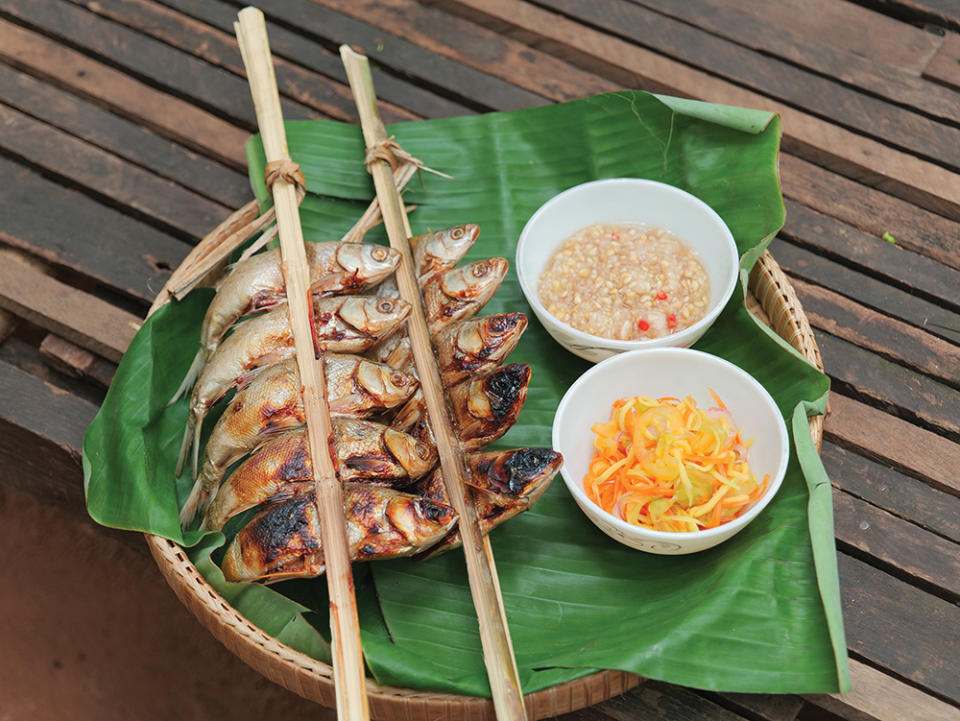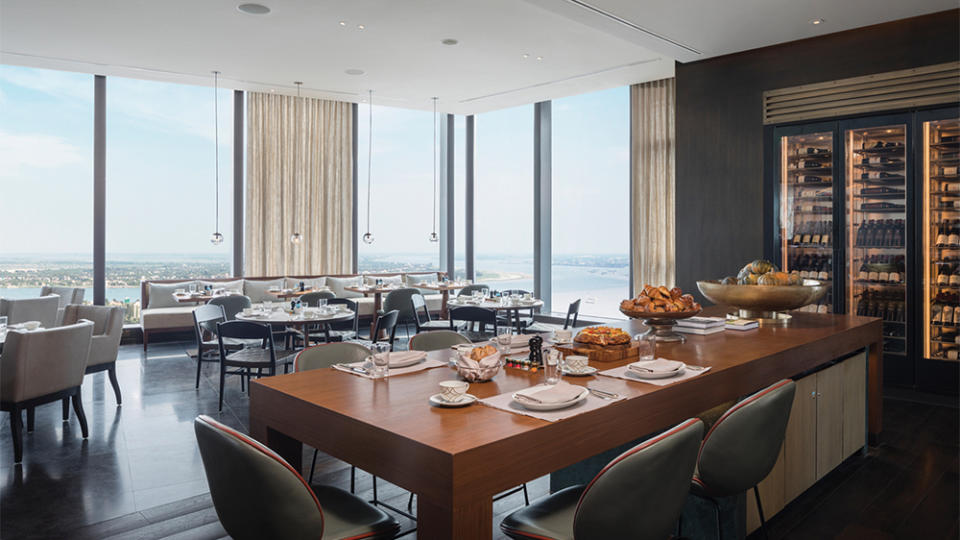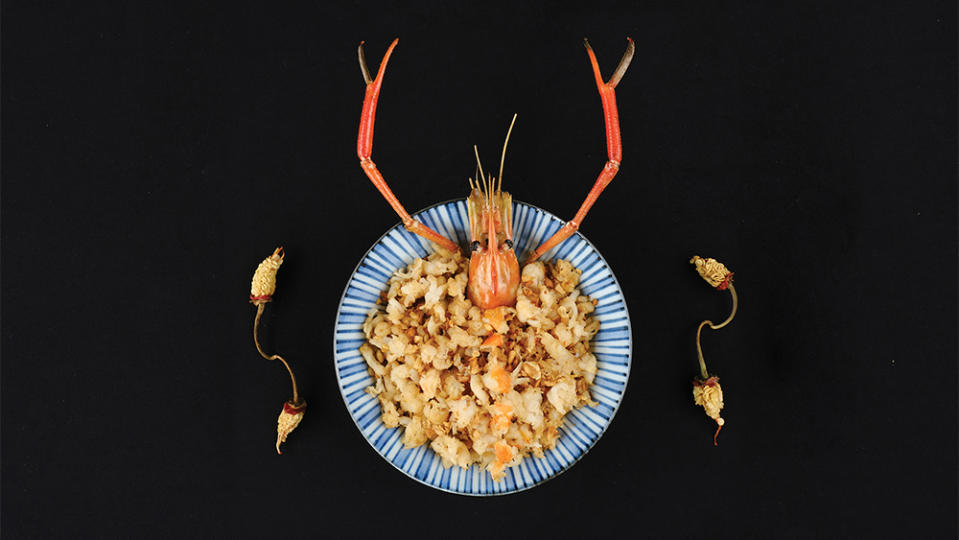A Brutal Dictatorship Decimated Cambodia’s Culinary Heritage. This Self-Taught Chef Is Bringing It Back.

The flavors of Southeast Asia need no introduction to Western diners thanks to popular dishes such as green curry, pho, banh mi, and pad Thai. But there’s something missing among the roster of inventive street-food staples from Vietnam, Thailand, Malaysia, and elsewhere—a whole country, in fact: Cambodia.
It should come as no surprise that the civilization that built Angkor Wat can also cook, but Khmer cuisine isn’t just unsung; it has been systematically erased. A millennium of cultural knowledge—an entire way of life—was nearly lost in the late 20th century. Not just to foreigners, but to Cambodians themselves.
More from Robb Report
Michelin-Starred Chef Michael White Just Opened a Restaurant in the Bahamas. Here's a Look Inside.
Michelin-Starred Elcielo Is Opening a New Edition of Its Hit Colombian Restaurant in Miami
Watch: How N.Y.C.'s Lure Fishbar Serves Thousands of Oysters a Week
“The Khmer Rouge killed anyone with any knowledge,” says Phnom Penh–based Rotanak Ros, better known as chef Nak. “People fled to other parts of the world. Documentation was destroyed. People were not allowed to cook the way they used to cook. Our rich cultural food became survival food.”

Infectiously passionate, Nak, 39, is working harder than anyone to recover what has been lost. A self-taught chef without a culinary or university education, she has spent the past 18 years as a cultural anthropologist, historian, archivist, writer, and activist, in the process becoming one of her country’s most in-demand celebrity cooks. Nak is the force behind the hugely popular Khmer menu, inspired by yesteryear dishes of the royal family, at Brasserie Louis in the Rosewood Phnom Penh; highlights include Lok Lak (sautéed beef with Kampot pepper sauce) and Hor Mok, with steamed freshwater fish, coconut cream and lemongrass, red pepper, and shrimp pastes. Since 2018, she has also opened her historic wooden home on the banks of the Mekong to private cooking classes, using kaffir limes, pandan leaves, cardamom, black ginger, and other items plucked from her garden, as well as ingredients from her food lab, including prahok (salty-sour fermented fish paste), banana vinegar, dried ripe cubanelle peppers, fermented soybeans, lemongrass tea, pickled limes, and rice wine infused with seasonal fruits.
Nak is also the author of two cookbooks—her latest, launched in May, is Saoy: Royal Cambodian Home Cuisine. A massive research project nearly four years in the making, it’s inspired by the recipes of Princess Norodom Rasmi Sobhana from the 1950s and ’60s and a vision of what haute Khmer cuisine can achieve.
“Cambodian food is cross-cultural,” Nak says. “China, India, France—we have influences from them all. We share almost all the same ingredients with Thailand, Vietnam, and Laos, but we use them differently. We use lemongrass paste and prahok, and our food is also very regional.”

So what is Cambodian food? “When I think of Cambodian food, I think of balance,” Nak says. “Sweet, salty, sour, and bitter—whatever we cook, it must be balanced.”
But those aren’t the flavors of her childhood. One of five children, Nak grew up in the chaos of life in Cambodia before the death of Pol Pot in 1998. It was the era of plain rice congee. As a child, she would get up after midnight to travel with her mother on the hour-long walk to buy vegetables for resale at their local market.
Her interest in food began at age 19, when she was hired by the nonprofit Cambodian Living Arts, an organization tasked with passing the knowledge of traditional performing arts from those who survived the Khmer Rouge to the younger generation. She soon realized that recipes deserved the same care.
“I wanted to know more about what Cambodian food was like before the regime, so I started to look for documents. I was like, ‘Wow’—I couldn’t find anything at all,” she says. “So I spent a lot of time and money out of my own pocket to travel around Cambodia collecting recipes from elderly people who still remember the textures and the flavors. I documented how people cooked, what ingredients they used, how they preserved their food, and the ceremonies and stories behind what they cooked.”
It took her more than a decade to identify forgotten ingredients, perfect her recipes, and build the confidence to leave her job in order to advocate for Cambodian cuisine full-time. With a pair of small boys to support—not to mention various siblings and parents—her husband took on extra jobs to offset the lost income. When life came to a halt during Covid, they used the time to expand their home restaurant, gardens, and business. Today, Nak offers luxury homestays, home dining, and cooking classes. She also operates a restaurant-consulting business.

Yet despite her “drop everything and cook” attitude, Nak says she never even considered a job in a professional kitchen. “I didn’t want to cook under male supervision,” she says. “My mom always taught us, ‘Earn for yourself,’ because that’s when you have power.”
Her plans for the future are equally untamed: a one-woman campaign to reshape how the world sees Cambodia via her unique take on gastro-diplomacy—especially urgent given the way travel shows have played up less-than-savory aspects of Cambodian cuisine (think fried spiders) for shock value.
“You see that your country has this potential, but at the same time, you are not there compared to your neighbors, even though you are equally good,” Nak says. “That is a pain. I want the world to see Cambodia for more than just our glorious temples and the Khmer Rouge. We are a lot more than that. I want to bring back our pride.”
Best of Robb Report
Why a Heritage Turkey Is the Best Thanksgiving Bird—and How to Get One
The 10 Best Wines to Pair With Steak, From Cabernet to Malbec
Sign up for Robb Report's Newsletter. For the latest news, follow us on Facebook, Twitter, and Instagram.

